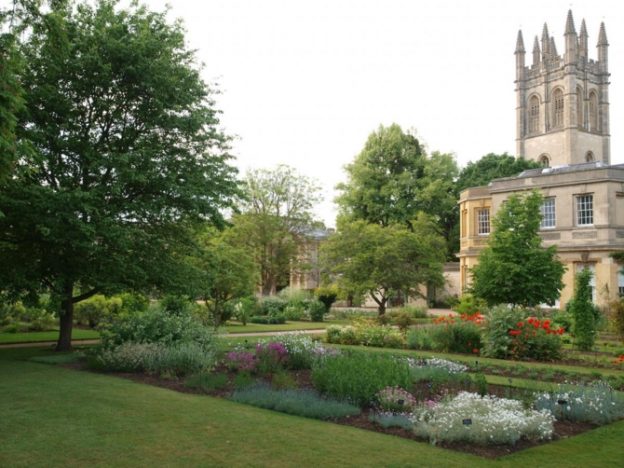On 12th October Timothy Walker gave a highly entertaining and informative talk on
“The University of Oxford Botanic Garden – The First 393 years”. The Garden was founded in 1621 with an endowment of £5000 by Sir Henry Danvers, 1st Earl of Danby. The land chosen had previously been the Jewish cemetery, and was prone to serious flooding in winter. This was rectified by the addition of large quantities of college waste sourced from the University scavenger “which added to the fertility of the soil”.
The original rectangular garden was surrounded by high stone walls – the work of Nicholas Stone – and constructed of local Headington stone. The magnificent Danby Arch was completed in 1633. The Latin inscription reads “To promote learning and glorify the work of God”. The purpose of the Garden was the cultivation of medicinal plants to support the University teaching, and its first “Horti Praefectus” was Jacob Bobart, a German botanist who arrived just
before the Civil War. His great achievement was to publish a catalogue in 1648 of the 1600 plants in his care in alphabetical order. One item from the original list is still alive in the Garden – asingle male Yew Tree. Its female companion died in 1972, and in 1992 the survivor changed Sex! This unusual ability to change from male to female is known as reproductive assurance, and this tree was the first conifer known to do this.
In 1659 a Herbal was produced by Robert Lovell which enabled students in Oxford and elsewhere to see the plants and their uses – a discipline still taught today. Timothy Walker then went on to talk about various plants and their special characteristics, for example each Yucca species needs a different moth to fertilise it. Research has also been done on locust
behaviour to determine which plants attract them to combat the damage done by huge infestations. The London Plane Tree was also first propagated in Oxford after seeds were brought in. The exchange of seeds between various botanic gardens is a practice that still takes place today.
Continuing with the history, we learned that Robert Morison became the first Professor of Botany in 1669, and in 1670 he gave the first lectures in the world on plant diversity. Johann Dillenius became the first holder of the Chair of Botany which was endowed by William Sherard. He was followed by Humphry Sibthorp, and later his son John, who in 1794 published “Flora Oxoniensis”, illustrated by Ferdinand Bauer.
We learned that greenhouses became a feature of the Garden in 1766. They were known to still be in existence in 1842. They were heated by trolleys filled with hot coals that were pulled through the houses throughout the night. Charles Daubeny (1834-67) was another significant figure associated with the Garden. He conducted experiments on the nutrition of plants. He also visited Chatsworth and was instrumental in bringing the giant Amazonian Lily to Oxford. It
required a special pond to be built to house it.
Between 1884 and 1888 Isaac Balfour became Professor of Botany at Oxford, and undertook a reorganisation of the layout of the Garden, classifying plants in beds. In more recent times modern methods have resulted in some alterations in these classifications. Some notable features of the Garden have been the Rock Garden, the main herbaceous border and the vegetable beds, and since 1983 the Garden has hosted the national collection of Euphorbias.
Another important development was the acquisition in 1963 of the Harcourt Arboretum. It was evident that the Garden will continue to evolve and change with each new Director, and remain an important feature of Oxford life.

